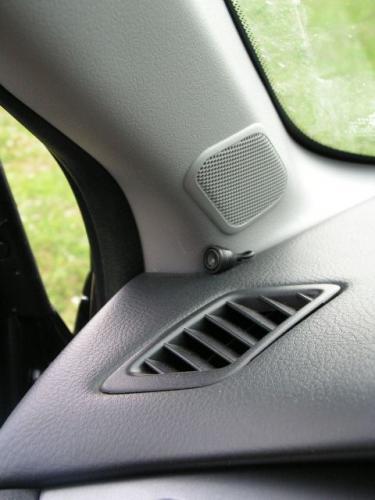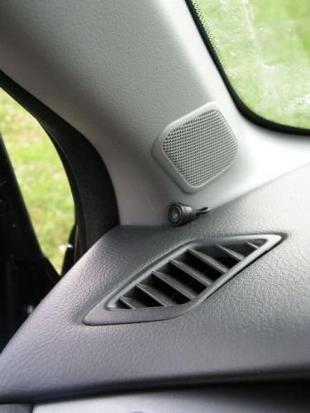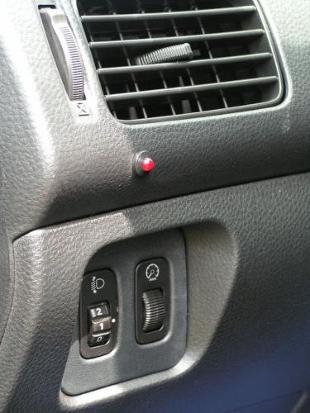
Don't be fooled
 What should I pay attention to when picking up a car from an anti-theft protection workshop?
What should I pay attention to when picking up a car from an anti-theft protection workshop?
As a rule, before going outside, a new car is equipped with an anti-theft system and an immobilizer. So, what should you pay attention to when picking up a car from a security workshop?
Unfortunately, there is no universal way to check the health of a car alarm or immobilizer. As a rule, only the theft attempt (often successful) shows how much the device installed in the car cost. To fully test the effectiveness of car protection, you need to know the car's electrical system, the design of the security devices installed in the car, and the theft methods used by thieves. Naturally, Private Kowalski is not able to check and evaluate the quality of the established hijackers. However, there are some elements that indicate whether such an installation is  was done right or our car was not prepared for a quick and hassle-free theft.
was done right or our car was not prepared for a quick and hassle-free theft.
The effectiveness of the car protection system consists of two main elements - the quality of the device itself and the correct installation.
Devices
A good security device must be secure and ensure - when installed correctly - that a system equipped with such an anti-theft alarm or immobilizer cannot be quickly disarmed.
Not so long ago, there was an easy way to disable the alarm, which consisted in short-circuiting the indicator bulbs, which blew the main alarm fuse, thereby turning it off. The ignition switch in this situation did not work properly and the car was ready to go. The devices are currently equipped with fuses (which do not require the use of external fuses) to cut off the short circuit current, and after the short circuit is removed, the system automatically returns to its original state before the short circuit. Thieves deal with this by turning off visual cues (sound and flashing lights) and buying time to manipulate the vehicle.
Older models, even Silicon or Prestige branded alarms, had a resisting lock designed in such a way that it was enough to tear off one power contact, which in turn led to a lack of power in the system and its lack of response to an attempted theft, since the relay worked in home position (not the current position). So the power supply to the blockade was turned off and the car could be started despite the sound of the siren. Currently, such solutions can only be found in cheap alarms brought from the Far East. In addition, it may happen that the codes in such a device are actually variables, but all instances are transmitted in identical sequence. So you should think before buying a cheap but inefficient device.
installation
It is often not possible for the installer - given the cost of the device, the expected margin and the labor involved in the installation - to complete the installation professionally and in a timely manner. That is why he often performs his service carelessly, which results in easy theft of a car fixed in this way.
How should such devices be properly installed? Assembly must be  made in such a way that the device (control unit) is not visible in the car, and the cables are masked in such a way that they are difficult to detect (cables rolled into bundles, without visible identification marks). The connections and the main fuse must be separate devices, woven into the bundle and visible only after the insulation has been stripped. In addition, its location should be different in each car and known only to its owner.
made in such a way that the device (control unit) is not visible in the car, and the cables are masked in such a way that they are difficult to detect (cables rolled into bundles, without visible identification marks). The connections and the main fuse must be separate devices, woven into the bundle and visible only after the insulation has been stripped. In addition, its location should be different in each car and known only to its owner.
One of the simplest safety measures is to turn off power to the fuel pump. But it is easy to get to (connect power) - usually just unscrew the cover under the rear seat. Therefore, a good installer will rivet the cover, which will make it very difficult to access the pump (which is easy to check under the sofa).
Often the biggest disadvantage of the assembly itself is its repetitiveness on all vehicles. If the dealer offers to install anti-theft devices from among two or three possible ones, you can be almost sure that certain types of them are installed in the same way. Thus, with a high degree of probability, we can assume that every car X bought from dealer Y (and this is usually indicated by advertising inscriptions on license plates) has the same device installed in the same place in the vehicle that thieves know about. very good. Disabling such a system is just a few minutes of hassle for them.
Another problem is the insufficient qualification of the installers. Often devices are installed according to the same scheme, not realizing (or knowing full well) that overcoming such protection is not even a matter of minutes, but seconds. The main installation errors are placing the siren in an easily accessible and visible place. To turn off the howling alarm, just open the hood and hit the siren with a hammer. And since a stolen car is worth nothing to the thief (until it is stolen), he will not resort to sophisticated methods and will use tools that belong more to the blacksmith's arsenal than to the surgeon.
A reliable craftsman, who, unfortunately, is becoming less and less, will put the switchboard in a hard-to-reach place, and in addition, he will try to place it in different places in each car where it is fixed. The wires will be identical (and therefore will not be able to be identified by vest colors or markings), and the installation elements will be well hidden and disguised (for example, it is effective to paint the relay so that it is difficult to identify). disguise its contacts, wires and the main fuse with electrical tape, hide the siren in a hard-to-reach place).
Ready to steal
A separate issue is unscrupulous installers who prepare the car for theft. Often days or weeks after visiting the workshop, it evaporates, despite the established safety measures. Apparently, the devices are working properly, turning the alarm and immobilizer on and off is unhindered, and at the most (and the thief's) only a known place, the electrician installs a wire (or terminals), which you just need to cut (or connect) to disarm the guards. Another method used by scammers is to remove the transponder from the original key when visiting the workshop and stick it permanently near the ignition in a hidden place. Thanks to this, you can start the car with a key made of the so-called. cast iron, without a transponder (because this one is in the car). Then the key is only used to open the steering lock. In this case, there is a simple method of checking whether such a manipulation was carried out in the car - just add such a spare key, paying a few zlotys, and check whether it is possible to start the engine with it after it. every service visit. If so, then his car was being prepared for theft.
There is no one easy way to test a security system - there would be too many components to test and every driver would have to be an electronic engineer. But you can, upon receiving the car (whether in a car dealership or in a workshop), at least ask the installer a few questions related to the problems raised here, ask him to show the installation elements, check whether they are properly disguised. Any confusion by an electrician, or even an attempt to evade an answer in such a situation, can be a wake-up call that something is wrong.
Interestingly, it would be relatively easy to check and identify factories that have carelessly installed security devices, often of inadequate quality, or cars that are even prepared for theft. A few years ago, the Car Alarm Section of the National Association of Intruder Alarm Manufacturers, Designers, and Installers postulated not only the verification of the devices themselves (as PIMOT does today), but also the effectiveness of protection and the certification of installers. Then, for a short period of time, owners of cars equipped with a certified safety system could count on a discount in AC insurance. Unfortunately, the situation soon changed, and since then, insurers have demanded that the car be equipped with such a system, neglecting the issue of its quality and workmanship. But it would be enough to keep statistics of theft, which would show which autoelectromechanical plants are reliable and their protection is effective, and which are just a cover for thieves. However, it could also turn out that the installations massively installed by dealers are ineffective ...
